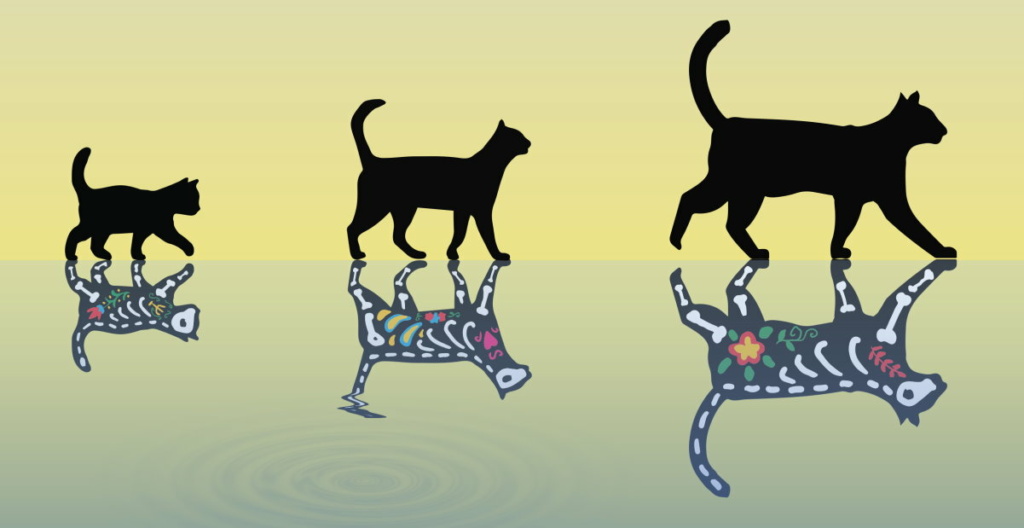
The world’s heaviest Schrödinger cat points to more robust quantum bits
Quantum mechanics allows for all sorts of wacky phenomena that aren’t observed at a macroscopic scale. So where does the realm of quantum mechanics stop and where does the world as people experience it start? The latest results of ETH Zurich scientists show that quantum mechanics still holds for objects as large as 1017 atoms. The tiny vibrating crystal they used has become the heaviest object ever to be recorded in a superposition of locations.
Essentially, the Swiss researchers have created the heaviest real-world Schrödinger cat to date. In Erwin Schrödinger’s famous thought experiment, a cat’s fate is tied to whether or not an atom decays radioactively. If it does, a gaseous poison is released into the closed box in which the cat is locked, killing the poor animal. A common explanation of quantum mechanics, called the Copenhagen interpretation, asserts that as long as nobody checks inside the box, the cat is dead and alive simultaneously – just like quantum mechanics allows for subatomic particles to be in two states at once.
Although the quantum randomness in the experiment derives from a microscopic object – the radioactive atom – the involvement of a cat highlights an important question in physics. Nobody expects to observe dead-and-alive cats in real life, and yet physics knows why. Apparently, somewhere between the scale of atoms and full-sized cats, quantum mechanics loses its power.
Dark matter
Naturally, science wants answers, starting with finding out where classical and quantum mechanics part company. After atoms and molecules have been coerced into a ‘cat state,’ the Swiss team put a much larger object in a superposition. In their experiment, the cat was a 16-microgram oscillating crystal about the size of a fine grain of sand. A superconducting circuit took on the role of the radioactive atom.
The circuit is essentially a qubit that can take on the logical states “0” and “1,” or the superposition of both, “0+1.” The link between the qubit and the crystal is a layer of piezoelectric material that creates an electric field when the crystal changes shape while oscillating. That electric field can be coupled to the electric field of the qubit, and hence the superposition state of the qubit can be transferred to the crystal. As a result, the crystal’s oscillations can now also be in a superposition: up and down, for example.
For the oscillation states to be true cat states, it’s important that they be macroscopically distinguishable. This means that the separation of the “up” and “down” states should be larger than any thermal or quantum fluctuations of the atoms’ positions inside the crystal. ETH physicist Yiwen Chu and her colleagues checked this by measuring the spatial separation of the two states using the superconducting qubit. Even though the measured separation was smaller than the size of an atom, it was large enough to clearly distinguish the states.
In the future, Chu would like to push the mass limits of her crystal cats even further. “This is interesting because it will allow us to better understand the reason behind the disappearance of quantum effects in the macroscopic world of real cats,” she says.
The research isn’t purely of academic interest, however, as there may also be potential applications. For instance, quantum information stored in qubits could be made more robust by using ‘cat states’ made up of a huge number of atoms in a crystal rather than relying on single atoms or ions, as is currently done. Also, the extreme sensitivity of massive objects in superposition states to external noise could be exploited for precise measurements of tiny disturbances such as gravitational waves or for detecting dark matter.
Main picture credit: Yiwen Chu/ETH Zurich





